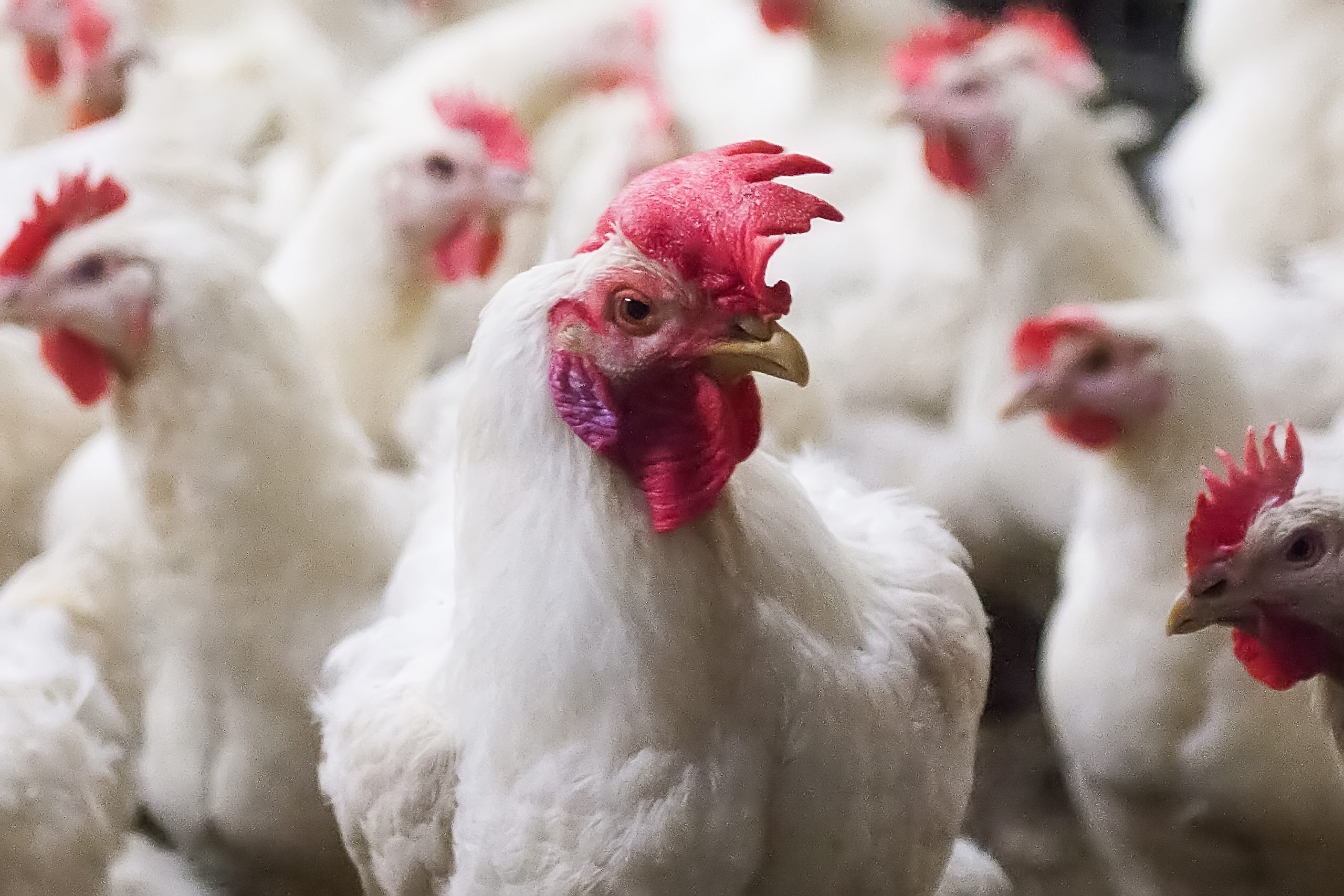Selenium’s effect on broiler breeders and offspring

Selenium plays major roles in various biological processes, especially under stress conditions. In this article, we take a closer look at pure forms of selenium and its effect on broiler breeders and their progeny.
Hydroxy-selenomethionine has proven to promote highly the functional form of selenium – selenocysteine, thus bringing consistent benefits to producers. This has been illustrated in broiler breeders, notably through better fertility and chick hatchability when breeders were fed with hydroxy-selenomethionine. This is because Selenium plays a part in functions that are crucial to male fertility. Indeed, spermatozoa, particularly rich in polyunsaturated phospholipids, are extremely sensitive to oxidative attacks, which can lead to lipid peroxidation, DNA damage, and impaired sperm motility. Spermatozoa are protected during their formation and storage thanks to several enzymatic and non-enzymatic systems that serve to control reactive chemical species. One of the most important system involves the glutathione peroxidase (GPx) family, comprising five selenoproteins. Indeed, GPx enzymes protect spermatozoa from hydrogen peroxide species damages. Moreover, GPx4 has a unique additional structuring function in the formation of spermatozoa mitochondrial capsule and DNA condensation1. Several selenoproteins with antioxidant and protective functions (GPxs, thioredoxine reductases) are also highly expressed in testicular tissues. Those different elements attests to the importance of selenium, through selenoprotein functions, for optimal male fertility2. The antioxidant status of male and female breeders is also of major concern to maintain optimal quality of sperm, to support prolonged sperm storage in the oviduct, as well as to improve hatching parameters. Dietary vitamin E and organic selenium supplementations indicate that antioxidants can sustain higher fertility in aging flocks or under heat stress3,4.
Organic source of selenium
Organic selenium sources, due to their better bioavailability, are recognised to improve antioxidant status better than mineral selenium sources5. A recent study was conducted on 800 female Cobb 400 breeders raised in tropical conditions (India) to investigate the effects of selenium sources and vitamin E levels. The results confirmed that hydroxy-selenomethionine*, as an organic source of selenium, positively influences GPx, superoxide dismutase and glutathione reductase activity in the blood (Figure 1), whereas vitamin E levels (50 or 200 IU/kg) had no influence (data not shown). The different cellular antioxidants, either enzymatic or not, are all site or substrate specific and work in a complex complementarity, which could explain such indirect effects.
Figure 1 – Effect of two different sources of selenium (at 0.2 mg Se/kg feed from 51 weeks age) on blood antioxidant biomarkers’ content, measured at 59 weeks of age.

Chick hatchability and further performances
Broiler breeders have a rather long lifespan, and a drop in hatching performance is generally observed with time. Ageing is a multi-factorial process and oxidative stress one of its components. The cumulative effects of oxidative stress and related damage contribute to this decline in hatching performance. In those conditions, improving the antioxidant status could help alleviate the effects of oxidative stress and maintain better hatching performance over a longer period. The results of the previously described broiler breeder study indicated that hatchability decreased with the breeders’ age (Figure 2).
Figure 2 – Selenium source main effect in broiler breeders fed different selenium sources at 0.2 mg Se/kg feed from week 51 of age on hatchability (in %) measured at week 58 (Period 1) and week 62 (Period 2). * P<0.05.></0.05.>

Interestingly, supplementing laying hens with organic selenium such as OH-SeMet maintains hatchability above 80% until the age of 62 weeks. An improved antioxidant status could thus alleviate oxidative stress damage and delay the drop of hatchability. This experiment focused on a rather short and late period of life (from 51 to 62 weeks). Indeed, oxidative stress mechanisms, through acute or chronic stress, could induce cumulative damage throughout the entire life of the breeders. Thus supplementing with OH-SeMet throughout the whole breeding period, by improving hatchability, would bring large economical gain through the entire breeding production career.
Better start for the progeny
Not only is the number of day-old chicks produced by broiler breeder important but also their quality and liveability for their first days of life. It is well demonstrated that selenium form and level in the maternal diet influences selenium transfer to the egg6. Moreover, mineral selenium sources are less efficient than organic selenium sources in improving egg selenium concentration. Egg composition could thus be modified through maternal diet, influencing the oxidative mechanisms, which occur during embryogenesis, but also through epigenetic mechanisms. OH-SeMet supplementation increases selenium concentration in both yolk and albumen, and maintains it until the end of embryogenesis, as shown by a higher day-old chick breast muscle selenium concentration7. Further analysis of the composition in seleno amino acids also indicate that OH-SeMet promotes more selenocysteine, the biologically active form of selenium found in selenoproteins, particularly in the egg albumen.

Effect on egg composition
Recent studies show that expression levels of selenoproteins (e.g. SelN) can evolve throughout chick embryogenesis and can be involved in muscle development8, whereas other selenoproteins (e.g. SelW), that are expressed during embryogenesis, serve as antioxidants9,10. GPx activity also evolves during embryogenesis. Indeed, liver embryonic GPx activity continuously increases during the second half of development (Surai, 1999). All those results confirm the strong influence of maternal diet on egg composition and progeny development. Recently, feeding OH-SeMet to layers has shown to positively influence vitamin E and yolk polyunsaturated lipid profile, probably through antioxidant mechanisms11. It has also been demonstrated that maternal selenium source can influence progeny growth performance. Indeed in one study, hens were fed three maternal diets, containing either sodium selenite, seleno-yeast (68.6% SeMet) or pure OH-SeMet at 0.2 mg Se/kg feed, for 23 weeks. Once hatched, the chicks were all fed the same diet with 0.2 mg Se/kg feed as sodium selenite. The growth performances of the progeny were measured on the 0-21 days period, and showed an improvement of the feed conversion ratio that could be related to the bioavailability of the different selenium sources and to the initial selenium concentration of the tissues12. (Figure 3). In another study, two groups of broiler breeders were either fed a diet supplemented with either a seleno-yeast (51.9% SeMet) or OH-SeMet at 0.2 mg Se/kg feed. Similarly, to the previous study, there was numerical tendencies to improve growth performances of chick progeny when OH-SeMet was fed in the maternal diet13. Such results confirmed the importance of optimal selenium and antioxidant status to support maximal genetic potential of the progeny.
Figure 3 – 0-21 day feed Conversion Ratio of mineral selenium fed broiler chickens obtained from breeders fed different selenium sources (mineral SS, SeYeast SY, OH-SeMet SO) (all diets were supplemented at 0.2 mg Se/kg feed maternal and chick diets). * P<0.05.></0.05.>

Conclusion
Through its implication in antioxidant processes, selenium is involved in various aspects of broiler breeder efficacy, from male fertility to hatchability, embryogenesis, and chick early performance. Highly bioavailable organic selenium sources like OH-SeMet are more efficient at promoting those parameters through antioxidant enzyme activation but also other finely regulated mechanisms like selenoprotein signalling function or epigenetic mechanisms.
OH-SeMet, Selisseo®. References are available on request.











